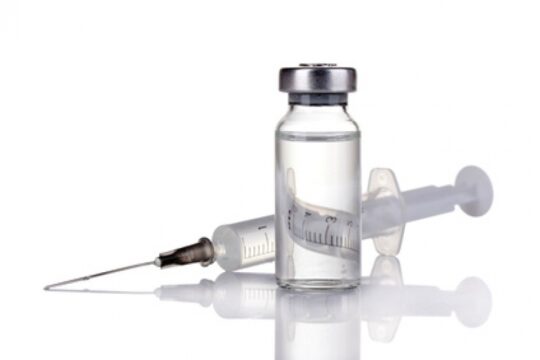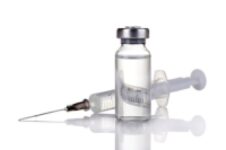Original title: Bivalirudin Started during Emergency Transport for Primary PCI. Reference: Philippe G. Steg, et;al. NEJM 2013; Octubre 30:1-11 Primary PCI is the preferred treatment for AMI within the first 12 hours of symptom onset and outcomes have been improving with the incorporation of new strategies and technology. This study randomized 2218 STEMI patients started with bivalirudin during…
Low cardiac mortality with bivalirudin beyond the reduction in major bleeding
Original title: Reduction in Cardiac Mortality with Bivalirudin in Patients With and Without Major Bleeding: The HORIZONS-AMI Trial. Reference: Gregg W. Stone et al. J Am Coll Cardiol. Epub ahead of print The HORIZONS -AMI study included 3602 patients experiencing ST segment elevation myocardial infarction received primary angioplasty, resulting in lower mortality at 30 days and three years…
Enoxaparin appears superior to unfractionated heparin in patients undergoing primary angioplasty
Original title: A direct comparison of intravenous enoxaparin with unfractionated heparin in primary percutaneous coronary intervention (from the ATOLL trial). Reference: Collet et al. Am J Cardiol. 2013; Epub ahead of print. ATOLL study analysis suggests that enoxaparin is superior to unfractionated heparin in reducing ischemic events and mortality in patients suffering ST elevation acute myocardial infarction (STEMI)…
Rivaroxaban reduces in-stent thrombosis in patients with acute coronary syndromes
Original title: Reduction of Stent Thrombosis in Patients With Acute Coronary Syndromes Treated With Rivaroxaban in ATLAS-ACS 2 TIMI 51. Reference: C. Michael Gibson et al. J Am Coll Cardiol 2013;62:286–90. There are few contemporary studies that investigated oral anticoagulation utility in patients with acute coronary syndromes and coronary angioplasty. Rivaroxaban is an oral anticoagulant that directly and…
Transradial access plus bivalirudin, the best combination to reduce bleeding
Original title: Comparison of bivalirudin and radial access across a spectrum of preprocedural risk of bleeding in percutaneous coronary intervention: Analysis from the National Cardiovascular Data Registry. Reference: Baklanov DV et al. Circ Cardiovasc Interv. 2013, article in press. Bleeding complications are clearly associated to mortality increase and two of the current best strategies to reduce bleeding are…
Rational use of bivalirudin, less bleeding and less costs using risk score
Original title: Pre-Procedural Estimate of Individualized Bleeding Risk Impacts Physicians’ Utilization of Bivalirudin During Percutaneous Coronary Intervention. Reference: Seshu C. Rao et al. J Am Coll Cardiol 2013;61:1847–52 While safety of coronary angioplasty has improved over time, post-procedure bleeding is still frequent with a large variability between centers. Bleeding is associated with increased mortality, myocardial infarction, stroke, increased…
Improved efficacy and also increased bleeding with Rivaroxaban in Acute Myocardial Infarction
Original title: Rivaroxaban in Patients Stabilized After a ST-Segment Elevation Myocardial Infarction. Results From the ATLAS ACS-2–TIMI-51 Trial. Anti-Xa Therapy to Lower Cardiovascular Events in Addition to Standard Therapy in Subjects with Acute Coronary Syndrome Thrombolysis In Myocardial Infarction-51. Reference: Jessica L. Mega et al. J Am Coll Cardiol 2013;61:1853–9. Morbidity and mortality rates following AMI have progressively…
Bivalirudin reduces bleeding complications in carotid angioplasty
Original title: Hemorrhagic and ischemic outcomes after bivalirudin versus unfractionated heparin during carotid artery stenting: A propensity score analysis from the NCDR. Reference: Wayangankar SA et al. Circ Cardiovasc Interv. 2013;Epub ahead of print. Bivalirudin is a direct thrombin inhibitor that has shown similar efficacy with a better safety profile in the context of coronary angioplasty. However, its…
Cangrelor: more effective than clopidogrel without increasing bleeding
Original title: Effect of Platelet Inhibition with Cangrelor during PCI on Ischemic Events. CHAMPION PHOENIX. Reference: Deepak L. Bhatt et al. N Engl J Med 2013. DOI: 10.1056/NEJMoa1300815. Despite advances in adjuvant therapy thrombotic complications remain a problem during coronary angioplasty. So far, up to the present, there was only P2Y
Appendage trans-catheter closure is equivalent to anticoagulation in fibrillated patients.
Original title: Percutaneous Left Atrial Appendage Closure for Stroke Prophylaxis in Patients With Atrial Fibrillation: 2.3-Year Follow-up of the PROTECT AF (Watchman Left Atrial Appendage System for Embolic Protection in Patients With Atrial Fibrillation) Trial. Reference: Vivek Y. Reddy et al. Circulation. 2013;127:720-729. Atrial fibrillation is the most common sustained arrhythmia in the world and its importance lies…
Percutaneous closure of the appendage: results, evidence, team training.
Our editors talked with Dr. Aníbal Damonte Percutaneous closure of left atrial appendage is now a practice that is becoming more topical with a view to results and perspectives. In this regard, we interviewed Dr. Aníbal Damonte, interventional cardiologist at the Cardiovascular Institute of Rosario (Rosario, Argentina). WEB SOLACI: May I first ask you to…









